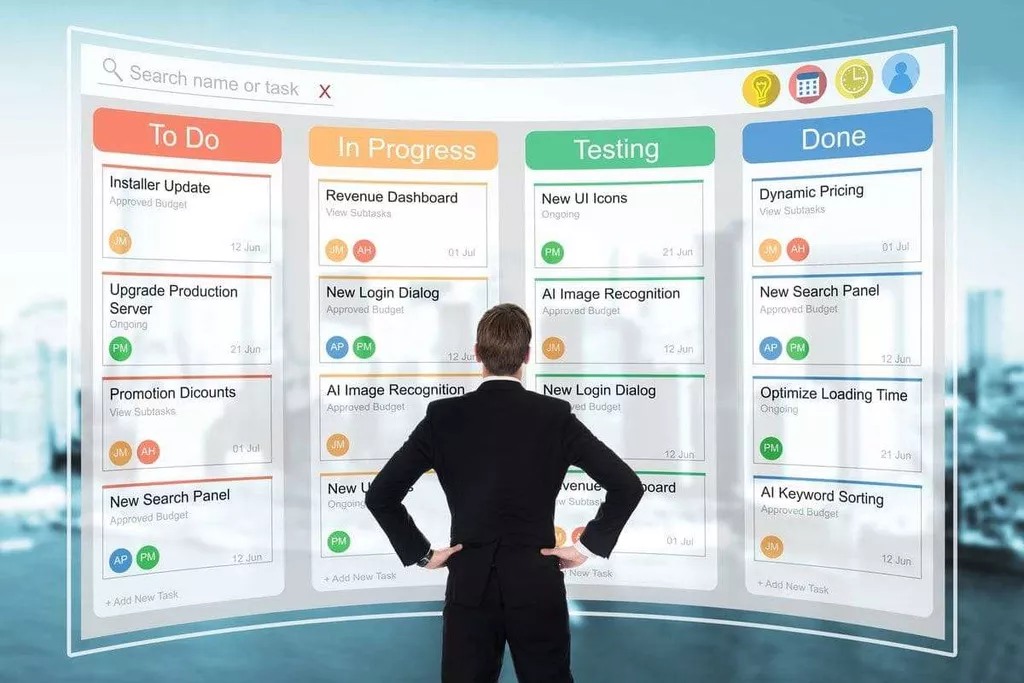The software development term scrum was first used in a 1986 paper titled „The New New Product Development Game“ by Hirotaka Takeuchi and Ikujiro Nonaka. The term scrum is borrowed from rugby, meaning a formation of players. The paper’s authors employed this sports’ term, scrum, in order to emphasize teamwork, since close, daily collaboration of team members is a hallmark trait of the project management framework.
The team of developers is the car itself, ready to speed along in whatever direction it is pointed. The product owner is the driver, making sure that the car is always going in the right direction. And the ScrumMaster is the chief mechanic, keeping the car well tuned and performing at its best. One way to think of the interlocking nature of these three roles in this agile methodology is as a racecar.
Scrum Master:
Therefore, they should share the same Product Goal, Product Backlog, and Product Owner. The fundamental unit of Scrum is a small team of people, a Scrum Team. The Scrum Team consists of one Scrum Master, one Product Owner, and Developers. It is a cohesive unit of professionals focused on one objective at a time, the Product Goal.
The Scrum Team takes part in five events and produces three artifacts. Scrum co-creators Ken Schwaber and Jeff Sutherland wrote and maintain The Scrum Guide, which explains Scrum clearly and succinctly. The guide contains the definition of Scrum, describing the Scrum accountabilities, events, artifacts and the guidance that binds them together. Courage for a scrum team is simply the bravery to question the status quo or anything that hampers its ability to succeed. Scrum team members should have the courage, and feel safe enough, to try new things.
Sprint Retrospective
This retrospective feedback helps improve the process in Sprints to follow. Sprint retrospective is one inspect-and-adapt opportunity at the end of each sprint. During a product backlog grooming https://www.globalcloudteam.com/ session, the development team works with the business owner to prioritize work that has been backlogged. The product backlog may be fine-tuned during a process called backlog refinement.

When looking at a large pile of work, it’s easy to become overwhelmed and fall behind in delivery. Lamott’s brother, young at the time, struggled with a book report and what is SCRUM waited until the last minute. Lamott’s father looked at her brother, put his arm around his shoulder and told him to take it “bird by bird” — one piece at a time.
What are the different roles in agile scrum methodology?
To prevent this it is very important to keep the meeting focused on how to work better as a team and not into a forum for personal attacks. I have found retrospective meetings to be of great value to let teams vent things that frustrate them and get ideas from the whole team on how to address these issues. Likewise, when things are going well, it is good for the team to talk about what makes them successful and make sure everybody is aware of what the team needs to maintain to keep the momentum going.

The product owner is responsible for maximizing the value of the product. The product owner gathers input and takes feedback from, and is lobbied by, many people but ultimately has the final decision about what gets built. When a sprint is abnormally terminated, the next step is to conduct new sprint planning, where the reason for the termination is reviewed. This is a concept in software development that reflects the implied cost of additional rework caused by choosing an easy solution now instead of using a better approach that would take longer. Product owners should see this event as a valuable opportunity to review and refine the product backlog with stakeholders. If review implies any deviations in the product, then adjustments are made as soon as possible to control further deviation.
Who is in the Scrum?
This is an optional event however usually practiced by Scrum teams. In this session, accomplished work is presented to stakeholders, and feedback is received. The purpose of the sprint review is to showcase what has been completed with respect to the plan i.e., the Spring Backlog, and provide a holistic picture with respect to the overall product backlog. This is the concluding or last event of the Sprint where the entire team reviews the outcome of the sprint. The sole purpose of this discussion is to demonstrate the work and obtain feedback from stakeholders.

Each Sprint starts with planning and ends with feedback from stakeholders. The process starts by listing the objectives/ requirements that make up the project plan. The client of the project prioritizes these objectives considering the right balance between the value and the cost thereof, that is how the iterations and subsequent deliveries are planned. Scrum teams have artifacts, such as a burn down chart to check in on the work.
Scrum in Software Development
There are 3 Scrum artifacts, and they are there to help improve the transparency of important information that the Scrum team and stakeholders need to know. The Scrum methodology promotes teamwork, accountability, clear common goals and continuous improvement of the product as well as that of the team, and the working environment. The issue of scaling agile is monolithic therefore starting at the team, or a few teams are the beginning of the journey which is required. Caution against applying scaling frameworks on day one typically yield less than beneficial results in the long run.
- Scrum does not define just what form requirements are to take, but simply says that they are gathered into the Product Backlog, and referred to generically as “Product Backlog Items,” or “PBIs” for short.
- The entire product does not need to be done for features to be released.
- This is where the team will discuss what needs to be done, create the product backlog, define the length of the Sprint and its goal.
- Artifacts that have low transparency can lead to decisions that diminish value and increase risk.
- Visualization of the work stages and limitations for simultaneous unfinished work and defects are familiar from the Kanban model.
- The team will have daily Scrum meetings, which are 15-minute sessions, during which the team members synchronize their activities and plan their activities for the day.
We should be using velocity to run our business; a story point velocity can be used to divide the product backlog and plan roughly when specific features will be available for our customers. What we need to do is incent stability in velocity, not velocity that is changing or in flux. In a world where there are incentives for increasing velocity, the teams will oblige and provide a higher story point velocity. They will inflate the story points to achieve the desired increase, which in turn reduce our ability to run the business because the velocity is no longer meaningful. In this article, we will explore the basics of Scrum in Agile project management, including its key principles, roles, and processes.
Principles of Scrum
The Scrum Team presents the results of their work to key stakeholders and progress toward the Product Goal is discussed. Daily Scrums improve communications, identify impediments, promote quick decision-making, and consequently eliminate the need for other meetings. The Daily Scrum is a 15-minute event for the Developers of the Scrum Team.